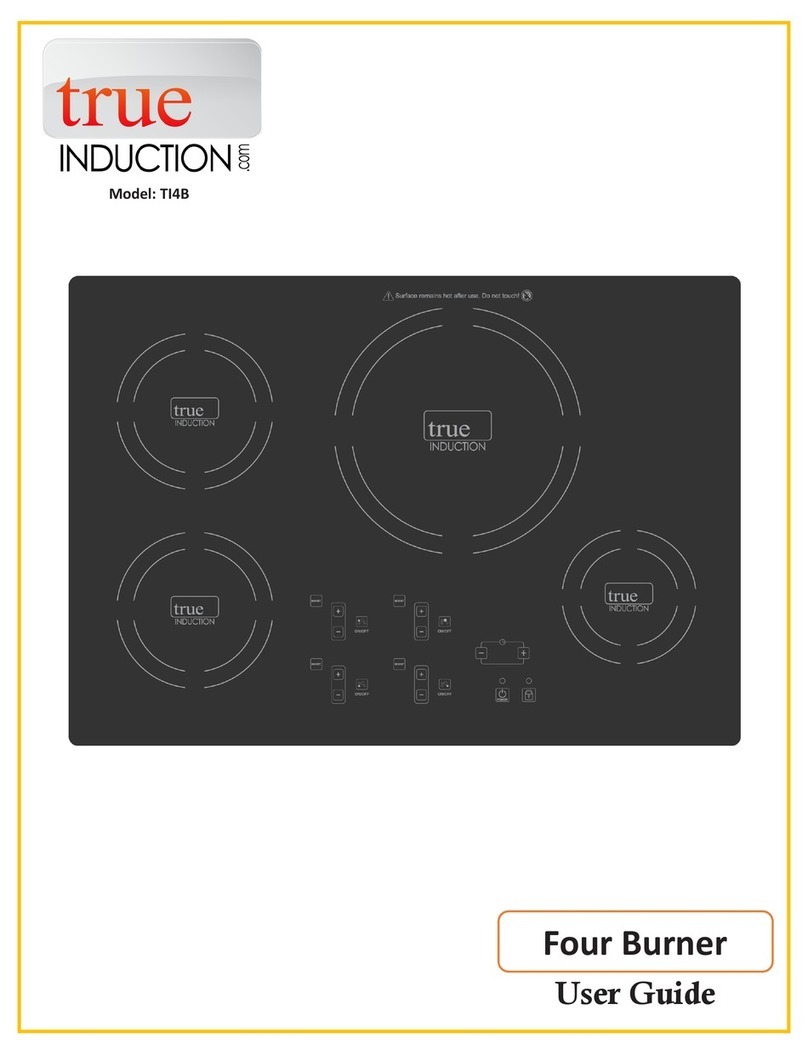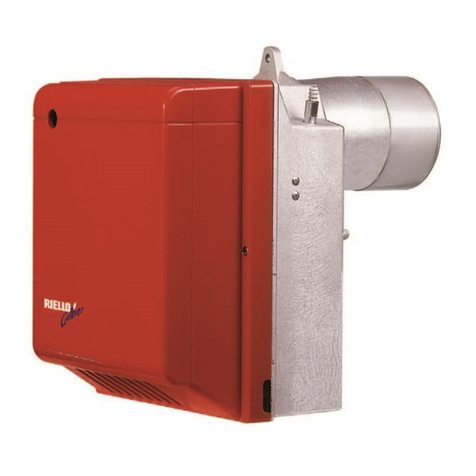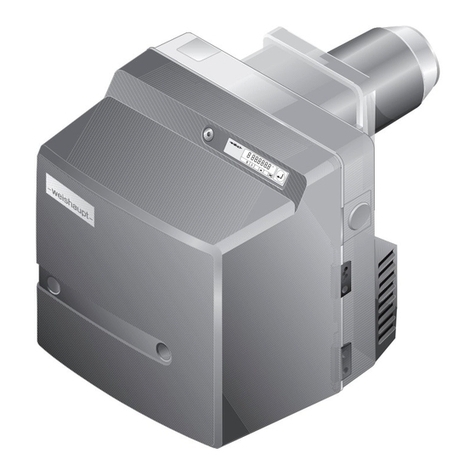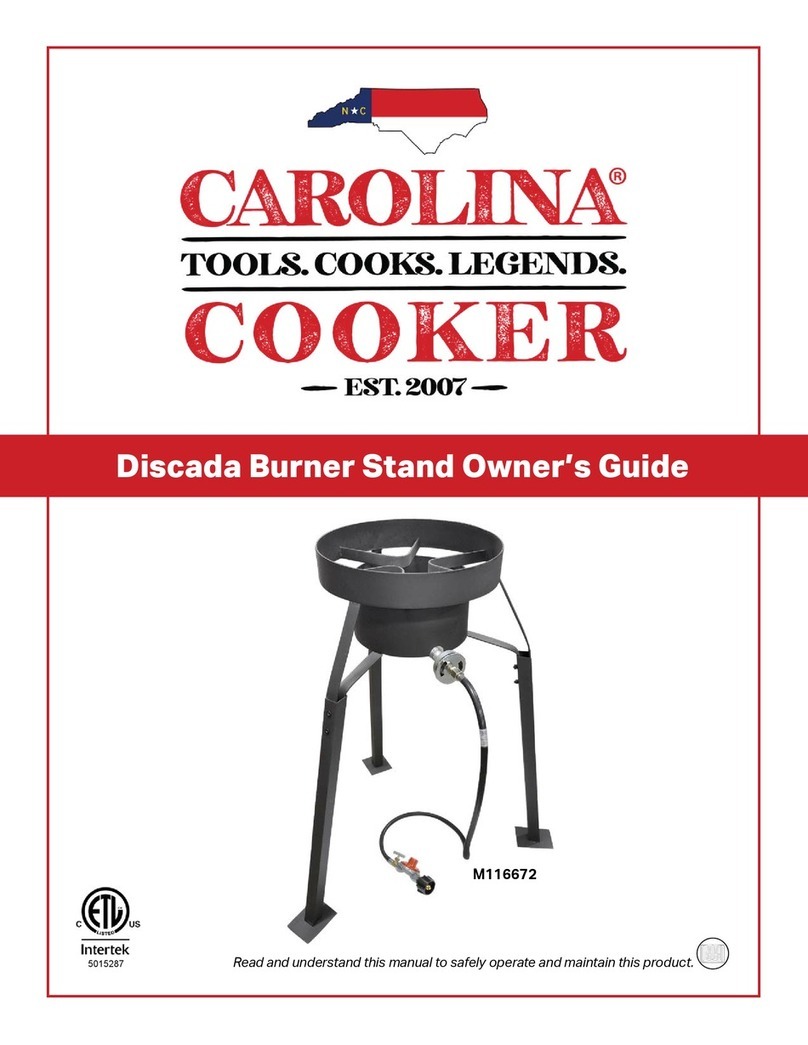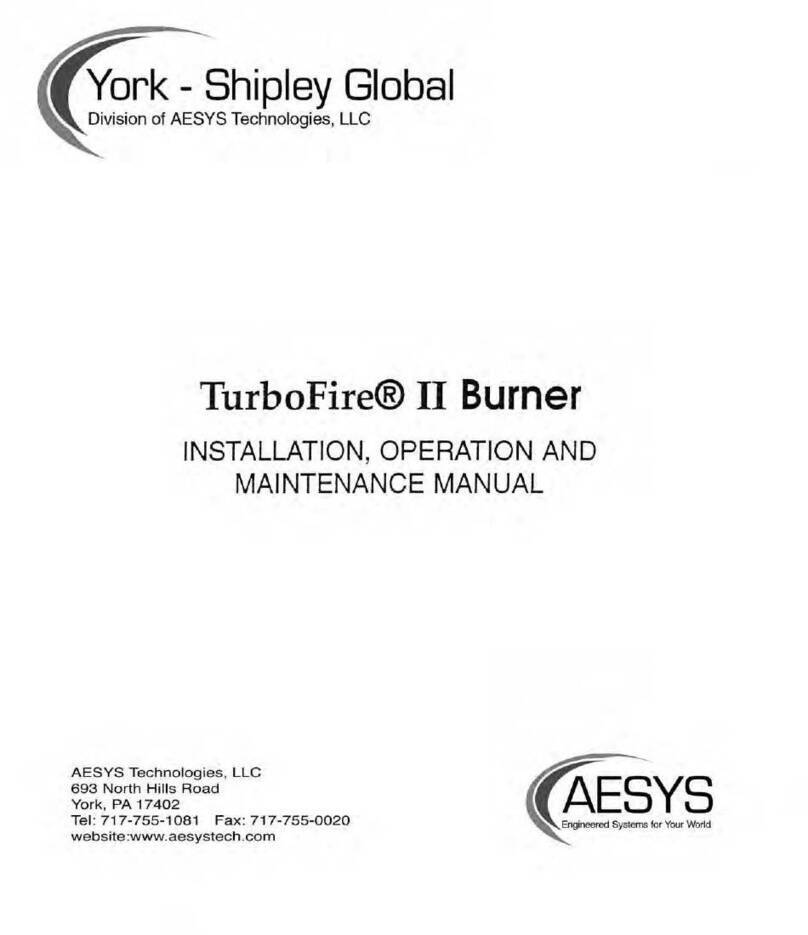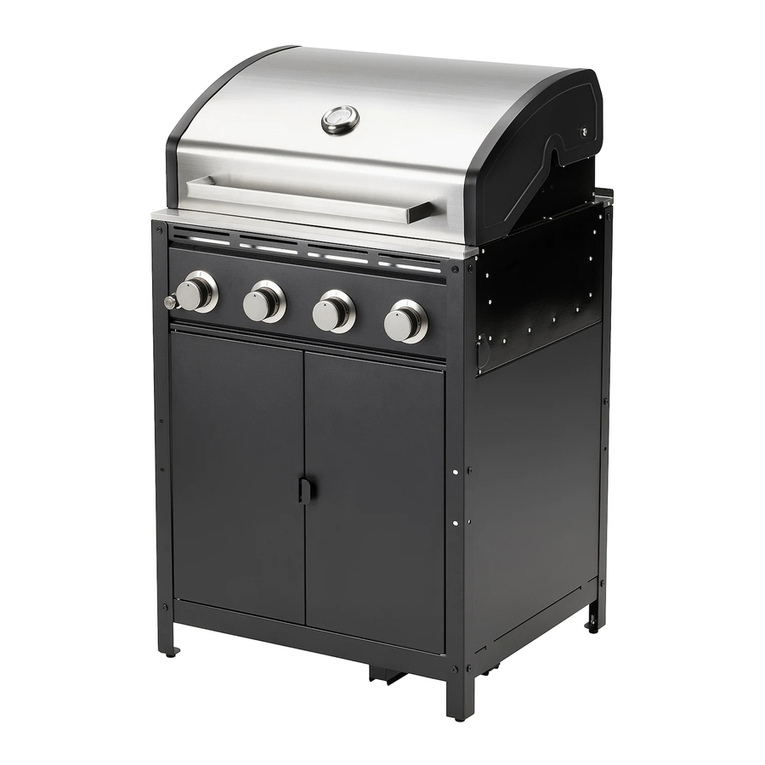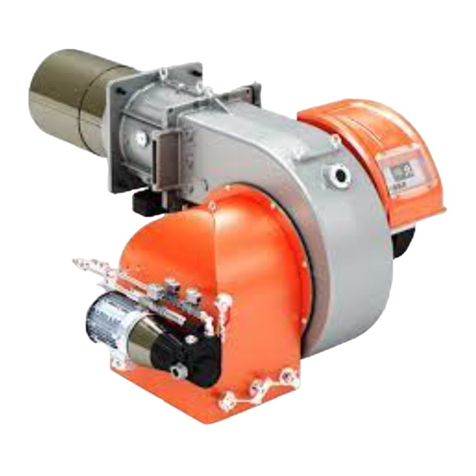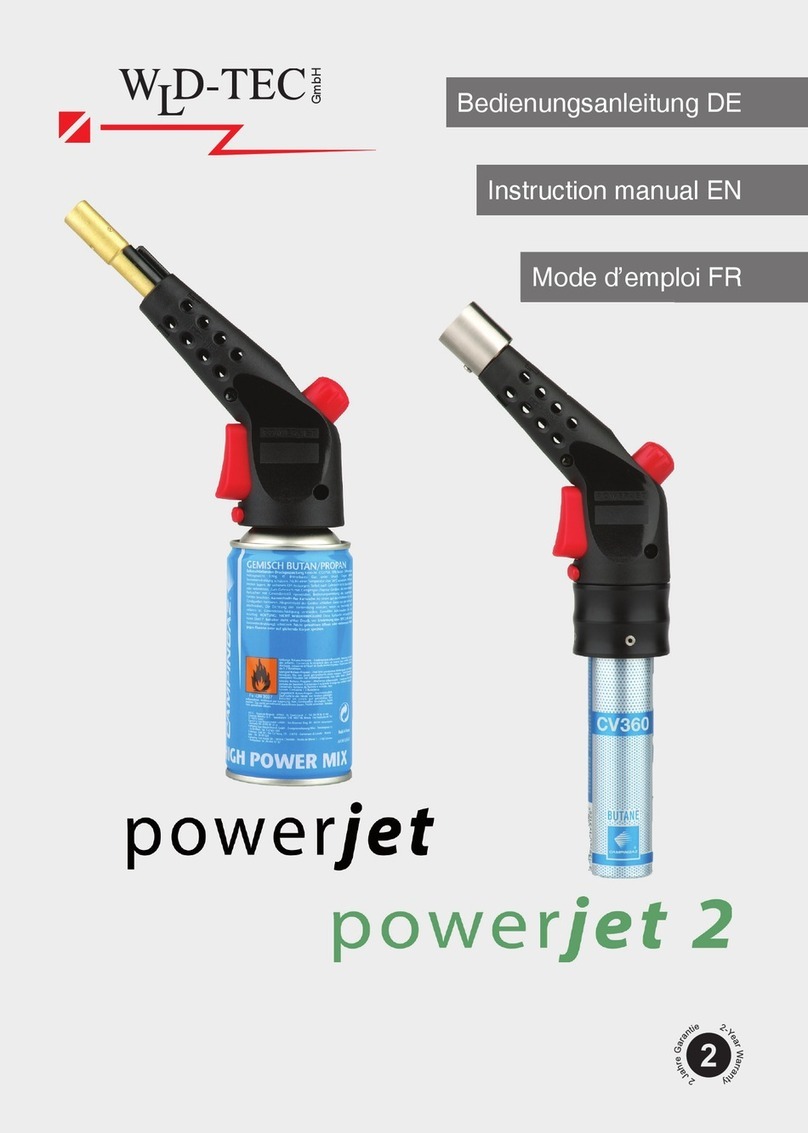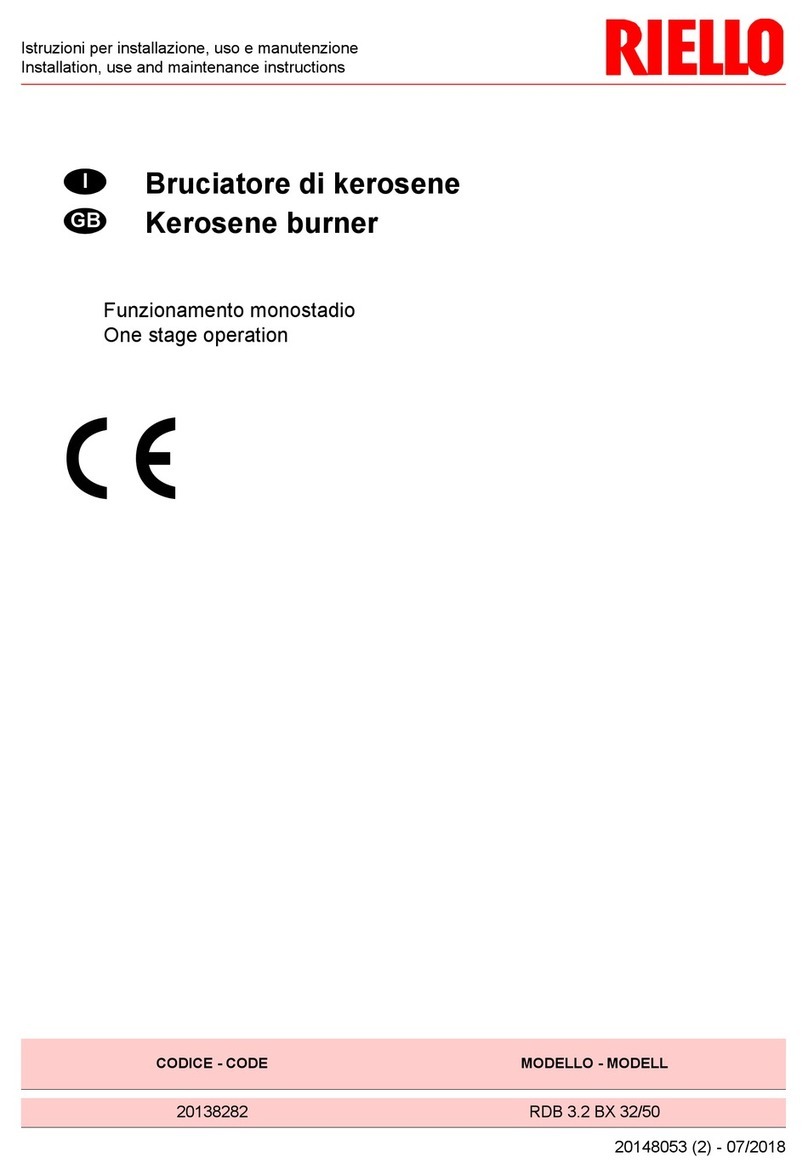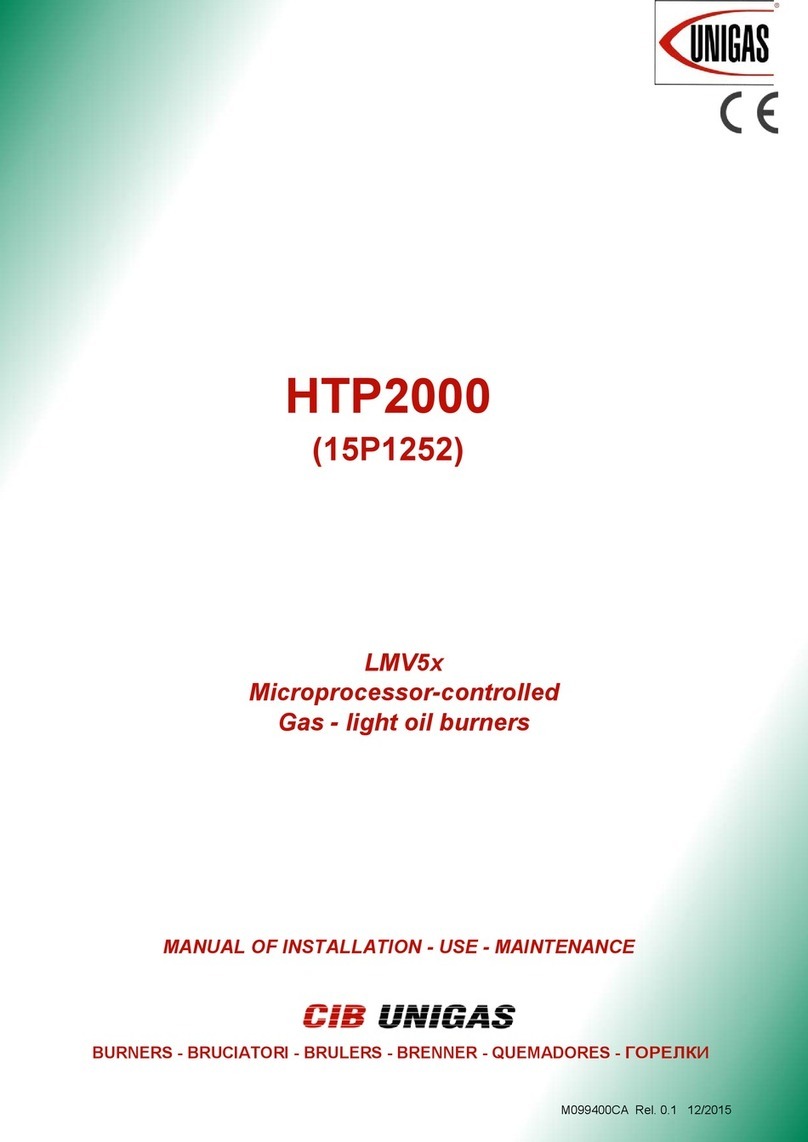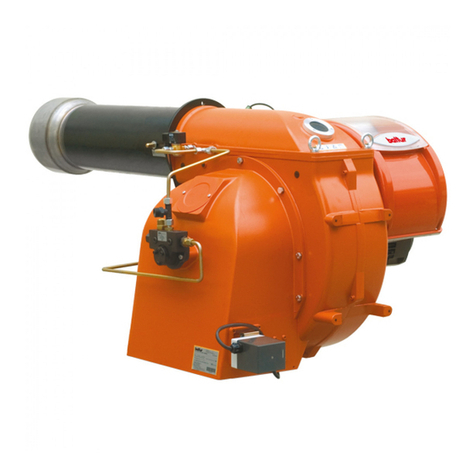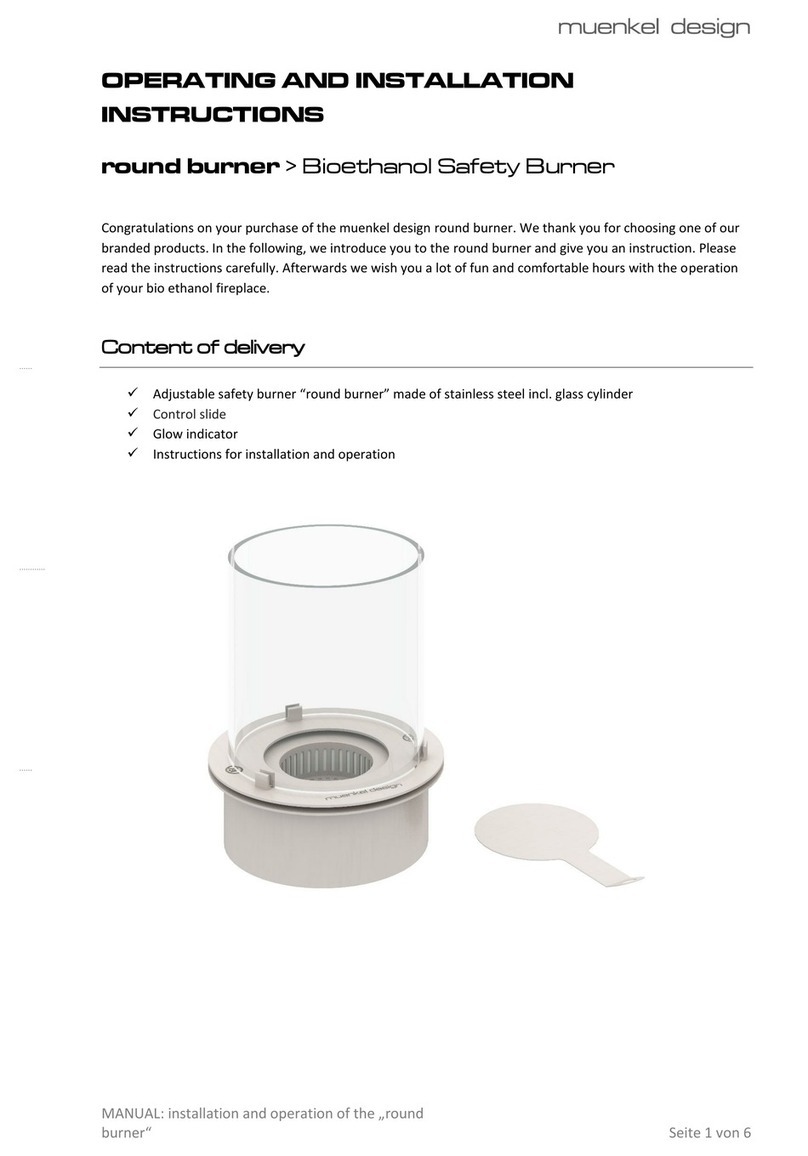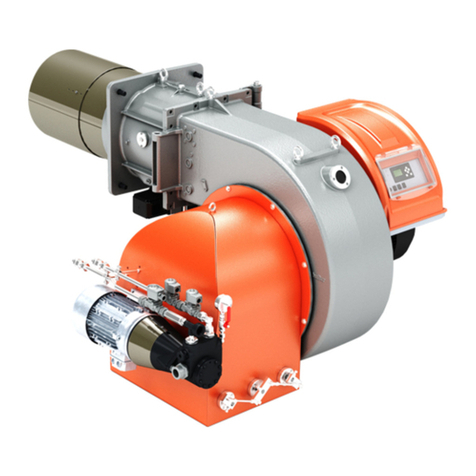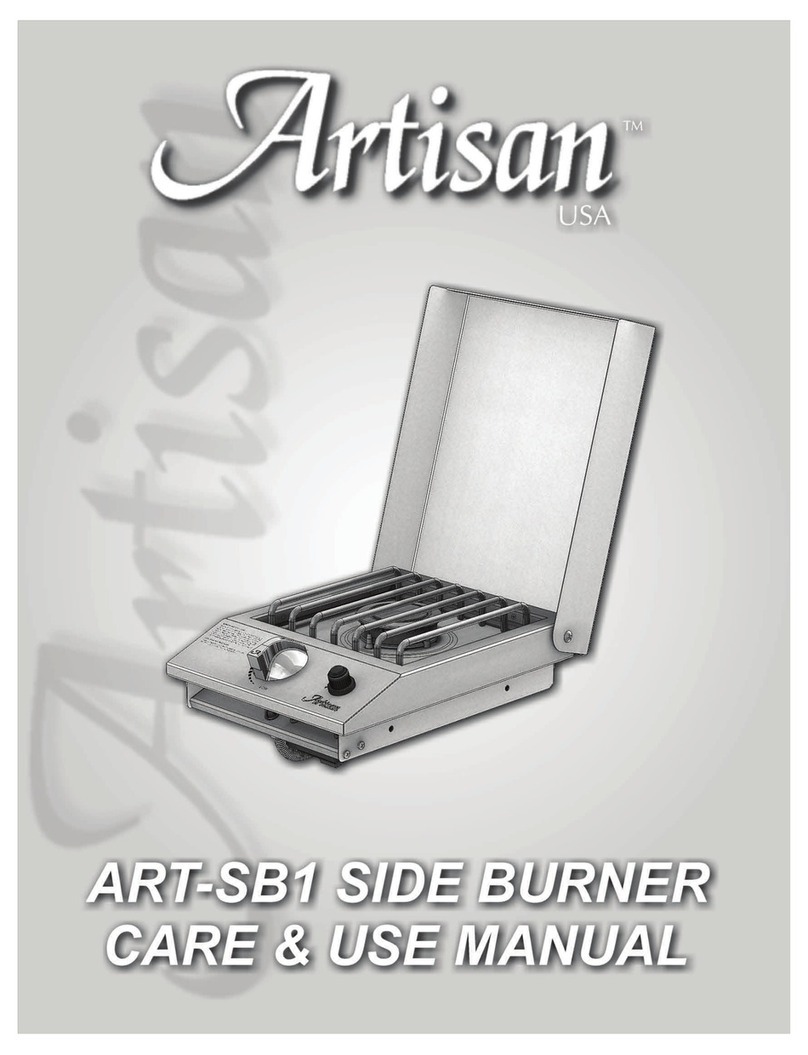
10
2009-03
RVR
Energy Technology Experts
• drier flue-gases, which reduces the risk of condensation.
The burner's haul factor is 0- 5 Pa, a higher draught gives igni-
tion problems, one or more of the following measures can be
taken:
• mount a contraflow hatch.
• set switch 2/2 in high draught position.
• mount a throttle plate at the top of the flue.
Agitators
Certain boiler types have, or can be equipped with, flue gas
agitators. Their job is to agitate the flue-gases so as to obtain
more heat and thereby raise efficiency levels. With low burner
output, flue gas temperature is low and there is a risk of con-
densation build up in the flue. Try to shorten the agitations
somewhat until a suitable flue gas temperature is obtained.
Smoke from the flue
The colour of the smoke reveals how well combustion is pro-
ceeding:
Grey brown: due to lack of air.
Invisible: heat shimmer, in temps. above freezing, or just below,
the smoke should be invisible.
White: with lower external temperatures, only a weak white
trail of steam should be seen.
Where the boiler has previously burned timber, the smoke can
be dark and have a strong smell because the tar in the boiler
and flue walls is being burned off. This can last for up to a
week.
Smoke emission
If the unit's hatches and damper are not sealed correctly,
there is a risk of smoke emission, particularly if overpressure
builds up in the boiler. If overpressure in the boiler is too great,
the burner will stop automatically. A smoke alarm can be a
great help in showing that flue-gases are leaking from the
burner room. Boiler hatches must be closed when the burner
is in operation.
The flame
The amount of air must be adjusted so that the flame is light
yellow. A few minutes after start-up, the flame should have a
yellow-white nuance. It is perfectly normal for the the colour to
vary between yellow and white.
The colour of the flame is an indicator of how well combustion
is proceeding:
Light yellow: good combustion, invisible smoke at normal tem-
perature.
Reddish: not enough air, or too much fuel, low efficiency level,
the boiler heat absorbing surfaces are blocked by
soot.
Important: short flame, due to surplus air, or lack of fuel, low ef-
ficiency level, high flue gas temperature.
Combustion values
The burner's delivery settings are not operational settings,
these must be adjusted in every single instance, using a flue
gas analysis instrument.
Correct adjustments are important so as to ensure fuel burn-
ing efficiency, a high level of energy efficiency, low discharge
of substances that may harm the environment, and also for
the longevity of those parts of the burner which come into
contact with flames. Optimum adjustments can only be
achieved using flue gas analysis instruments. The values state
how combustion should be proceeding. Please note, however,
that these values will vary somewhat in the ignition phase:
Flue gas temperature: 160°C1Efficiency level: >90 %
CO content: <300 ppm Boiler temperature: 75-80°C
CO2content, substance: 12,5 %2
1Dependent on type of flue2±2,5%
Check before first start-up
Before the burner is put into use, please check that:
• the installation has been carried out properly.
• the slope on the screw is 40°.
• all control units have been properly adjusted.
• the boiler is in proper functioning order.
• the burner is receiving sufficient air for combustion.
• pellets are being fed to the burner.
• the grate is in the proper position.
• the flue is fully intact and of the right dimensions.
Screw feeder
Before burning can commence, the screw feeder must be
filled with pellets.
1. Release the screw feeder's quick release device from the
burner. Place a collection receptacle under the tube.
2. Start the screw feeder by connecting it to an earthed wall
socket. Allow the screw to run until 25- 30 litres of pellets
have passed through the screw.
3. Remove the plug from the wall socket, reattach the quick
release device and the plug to the burner.
Flue gas temperature
Risk of injury.
Do not place your hands or objects inside the screw feeder.
The flue gas temperature after the boiler should be 160- 200
°C.
Higher temperatures may be due to soot blockage in the
boiler, or too much combustion air. High flue gas temperatures
cause poor efficiency levels and unnecessary pellet consump-
tion. An older boiler often has higher flue gas temperatures
than a modern type in similar conditions.
A low flue gas temperature may be due to poor combustion
because of a lack of air, or that the burner boiler is over dimen-
sioned, specially at low output settings on the burner. There is
then a risk of condensation in the flue with frost damage as a
result.
The flue
In order to avoid damage to the flue, flue gas temperatures
must be checked on every occasion.
During combustion, water builds up in the form of water drop-
lets, which follow the flue-gases out of the flue. Depending on
the drop in temperature, these droplets can condense to wa-
ter, which can then cause damage to the flue. Condensation
damage can be avoided if flue gas temperatures are no lower
than 70°C at one metre from the top of the flue. Low flue gas
temperatures give a higher efficiency level, which has to be
weighed against the risk of condensation. Measures to take
for raising flue gas temperatures:
• remove any agitators or baffle plates in the boiler.
• mount a contraflow hatch.
• isolate the flue in a cold environment.
• increase the burner's capacity
• mount an insert pipe.
Contraflow hatch
All pellet burning equipment should have a contraflow hatch.
For flues higher than 5 m, or with a high and/or variable
draught, this hatch is a statutory requirement.
Draught is affected by temperature, weather and wind. Given
that combustion results are affected by draught, stable
draught conditions are very much preferred. The simplest
way to stabilise conditions is to mount a contraflow hatch on
the waste gas flue. Air from the burner chamber slips into the
waste gas flue via the hatch, the advantages are:
• more stable draught and flue gas temperature.
• reduced losses when in idle mode.
• ventilation of the waste gas flue.
Start-up


